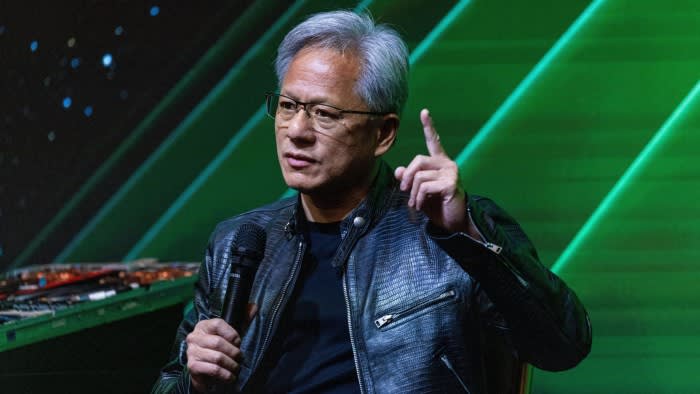Unlock Editor’s Digest for free
FT editor Roula Khalaf picks her favourite stories in this weekly newsletter.
Nvidia is on track to sell $12 billion worth of artificial intelligence chips to China this year, despite U.S. export controls that have limited its operations in one of the world’s largest semiconductor markets.
The $3 trillion Silicon Valley group will ship more than a million of its new H20 chips, designed to evade U.S. restrictions on selling AI processors to Chinese customers, in the coming months, analysts predict.
That figure is nearly twice what Huawei is expected to sell of its Chinese-made rival, the Ascend 910B, according to estimates by SemiAnalysis, a chip consultancy.
Nvidia is the latest Silicon Valley company to find itself embroiled in tensions between Washington and Beijing. The Biden administration wants to stem the flow of the world’s most powerful chips to China, fearing Beijing could use them to build more powerful AI systems with military applications.
The resulting shortage of AI chips has undermined the ability of Chinese tech groups such as ByteDance, Tencent and Alibaba to compete with U.S. companies OpenAI, Microsoft, Meta and Google in a technology that is reshaping the industry.
Each H2O chip costs between $12,000 and $13,000, suggesting that Nvidia is expected to generate more than $12 billion in sales. That would be more than the $10.3 billion in revenue generated by its entire China business — including sales of graphics chips to PC gamers and other products — in the fiscal year ending January 2024.
Nvidia declined to comment on the forecast. Huawei did not respond to a request for comment.
Since the Biden administration first introduced restrictions on Nvidia’s ability to sell its most powerful AI chips to China in 2022, the U.S. company has warned that its business would suffer as cloud providers and AI startups turn to local alternatives such as Huawei.
“Our business in China is significantly smaller than it was in the past,” Nvidia Chief Executive Jensen Huang said on the company’s last earnings call in May. “And there’s a lot more competition in China today, because of the limitations of our technology… But we continue to do our best to serve customers in China.”
Nvidia Chief Financial Officer Colette Kress said on the same call that revenue from its data center segment — which includes AI chips — in China in the latest quarter was “significantly below the level before the new export control restrictions were imposed in October.”
As recently as 2021, before the U.S. began imposing export controls, China accounted for more than a quarter of Nvidia’s total revenue. Even if the H20 chip sells as well as analysts expect, China could be closer to 10% of sales this year. But it also reflects the huge growth Nvidia is seeing among U.S. tech companies building increasingly large AI systems.
Although Nvidia’s sales in China were weaker before the new H20 launched this spring, analysts at Morgan Stanley and SemiAnalysis say the chip is now shipping in volume and proving popular with Chinese customers, despite its lower performance than chips Nvidia can sell in the United States.
“Buyers are reporting positive feedback on the potential competitiveness of H20 clusters,” Morgan Stanley wrote in a research note to clients this week, highlighting “strong Chinese demand.”
Dylan Patel of SemiAnalysis said that while the H20’s capabilities “on paper” were inferior to Huawei’s 910B, in practice Nvidia’s chip was “a bit ahead,” thanks to superior memory performance.
He estimated Huawei would sell about 550,000 910B chips over the same period, as the Shenzhen-based company and its manufacturing partners struggle to produce complex processors in high enough volumes to meet demand.
Most Chinese AI companies have also built their AI models on Nvidia’s ecosystem and software. Switching to Huawei’s infrastructure would be time-consuming and costly.
The Biden administration introduced restrictions on Nvidia’s ability to sell its most powerful chips, including the A100 and H100, to China in October 2022. It further tightened those controls late last year to exclude Nvidia’s newest chips as well. In November, Nvidia began shipping a new series of China-specific chips, the most powerful of which is the H20.
Including chips for PC gamers, data centers and other customers, China accounted for about 9% of Nvidia’s total revenue in the latest quarter, which ended in April, down from 22% in the same period a year earlier. However, overall revenue from China, including Hong Kong, continued to grow during that period, rising more than 50% year over year to $2.5 billion.


